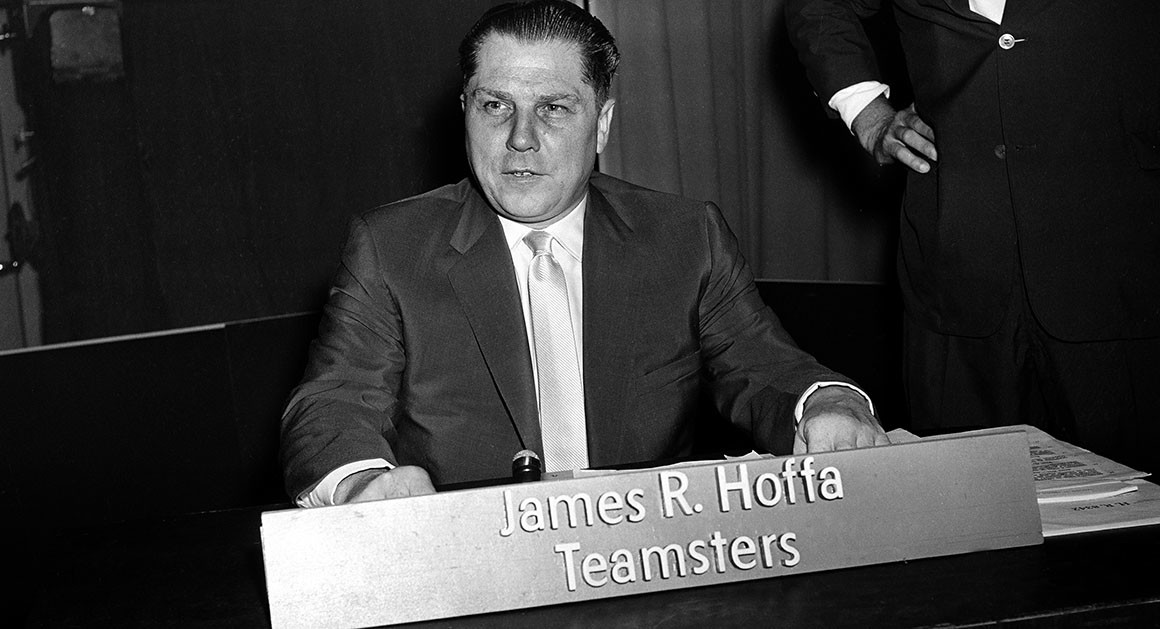
This Day in Labor History: December 12, 1957. The AFL-CIO evicted four unions from the federation for corruption, most notably the International Brotherhood of Teamsters. Let's talk about corruption in unions, which is unfortunately a plague of all power, not just unions. 

There’s certainly nothing special about labor unions in this way except that corporate corruption is dealt with through hand slaps or ignored or even celebrated while union corruption brings down the federal government in harsh ways.
This is a reflection of the nation’s pro-corporate ideology. But corruption in unions is an unquestionably awful thing. As early as the 1920s, there were investigations of corruption in some New York building trade unions.
By the 1950s, corruption had become a larger issue in some unions. The International Brotherhood of Teamsters especially had a lot of ties with the mafia and the union’s pension fund became a slush fund to fund the building of Las Vegas, among other projects.
Teamsters’ head Jimmy Hoffa led a personally modest lifestyle for the power he had in this country as one of the nation’s most militant labor leaders, but he was happy to use his members’ money for illegal purposes.
Moreover, the IBT was pretty decentralized, with regional directors having a lot of power themselves and many of them were engaged in pretty open corruption.
When the AFL and CIO merged in 1955, the labor movement was in a new era of wanting to be friendly to business, good partners with employers and the government in building up the nation.
There were some big downsides to this, particularly the ending of the militancy that built the movement in the first place and the engagement of the most grotesque anti-communist politics overseas that implicated organized labor in some of the Cold War’s most shameful incidents.
In order for George Meany to see this vision, such as it was, through, he needed to purge the labor movement not only of its communists, but of the corrupt unions.
In 1956, the AFL-CIO created the Ethical Practices Committee which created a rule that any union member taking the Fifth Amendment on anything concerning racketeering were to be kicked out of office immediately.
This in itself didn’t do a whole lot but it was a significant advancement in the power of the AFL-CIO. Neither federation, especially the AFL, had that much power over internationals before this. So the precedent was important.
Meanwhile, it was political gold for politicians to attack unions. Joseph McCarthy, always looking for a new way to attack unions, proposed a select committee to investigate racketeering.
This became known as the McClellan Committee, headed by John McClellan of Arkansas, a conservative Democrat. McCarthy was supposed to play a leading role but managed to drink himself death first.
McCarthy’s good friend and ally John F. Kennedy was on the committee. JFK’s brother Robert was the general counsel for the committee. On national television, the Kennedy brothers decided to build their political careers on union corruption. They did so effectively.
The AFL-CIO initially supported the hearings, but when it became a free-for-all against a whole range of union activities, which led to the Landrum-Griffin Act, it turned against it.
Of course, the Kennedys realized there was no benefit to also attacking corporate corruption, so they left that alone and Landrum-Griffin only created new requirements for unions, not business.
No one came under more attack from the McClellan Committee than the Teamsters. When the hearings started in 1957, the right-wing Dave Beck was still president, the man responsible for busting the Oakland General Strike in 1946 because it threatened his personal power.
Hoffa was executive vice-president and rose to replace Beck very shortly after. But it wasn’t only the Teamsters who came under the hot lights.
The Bakery and Confectionery Workers, one of the oldest AFL unions, also were found to be corrupt, with its president and vice-president personally stolen the funds of a local placed under trusteeship.
Although disgusted by the Kennedys and the McClellan Committee generally, the AFL-CIO knew it had to take action when it met at its annual convention in December 1957.
Secretary of Labor James Mitchell addressed the convention and announced what would become Landrum-Griffin. Knowing that the writing was on the wall and fearful of an even broader attack on union power, the federation announced its support of the bill.
And then, on December 12, the federation expelled the Teamsters, the Bakery and Confectionery Workers, the Laundry Workers, and the International Longshoremen’s Association, the east coast longshoreman union that Harry Bridges had broken from after leading the 1934 strike.
The federation immediately created a new Bakery and Confectionery Workers and regained some of those workers, but the loss of the Teamsters with its 1.2 million members was a huge blow to the federation’s strength and finances.
A few other unions–the United Textile Workers, the Distillery Workers, the Allied Industrial Workers, and the Waste Materials Handlers Union barely avoided expulsion themselves, but these were all old, small AFL unions.
Hoffa would keep the Teamsters as one of the most powerful unions in the nation until his arrest and conviction in 1963, after Robert F. Kennedy continued his war on that organization after him being named Attorney General by his brother.
Corruption is not unknown today in unions. Recent United Auto Workers leadership has been busted for misusing workers’ dues for lavish travel. This is sad and regrettable.
But the public myth about unions being corrupt is vastly overrated, especially compared to the ludicrously over the top levels of corruption that define American corporate practices every single day.
Unions need to be vigilant about this and mostly they are. But wherever there is money, there will be corruption.
Back Monday to talk about the attempt for full employment legislation at the end of World War II.
• • •
Missing some Tweet in this thread? You can try to
force a refresh






